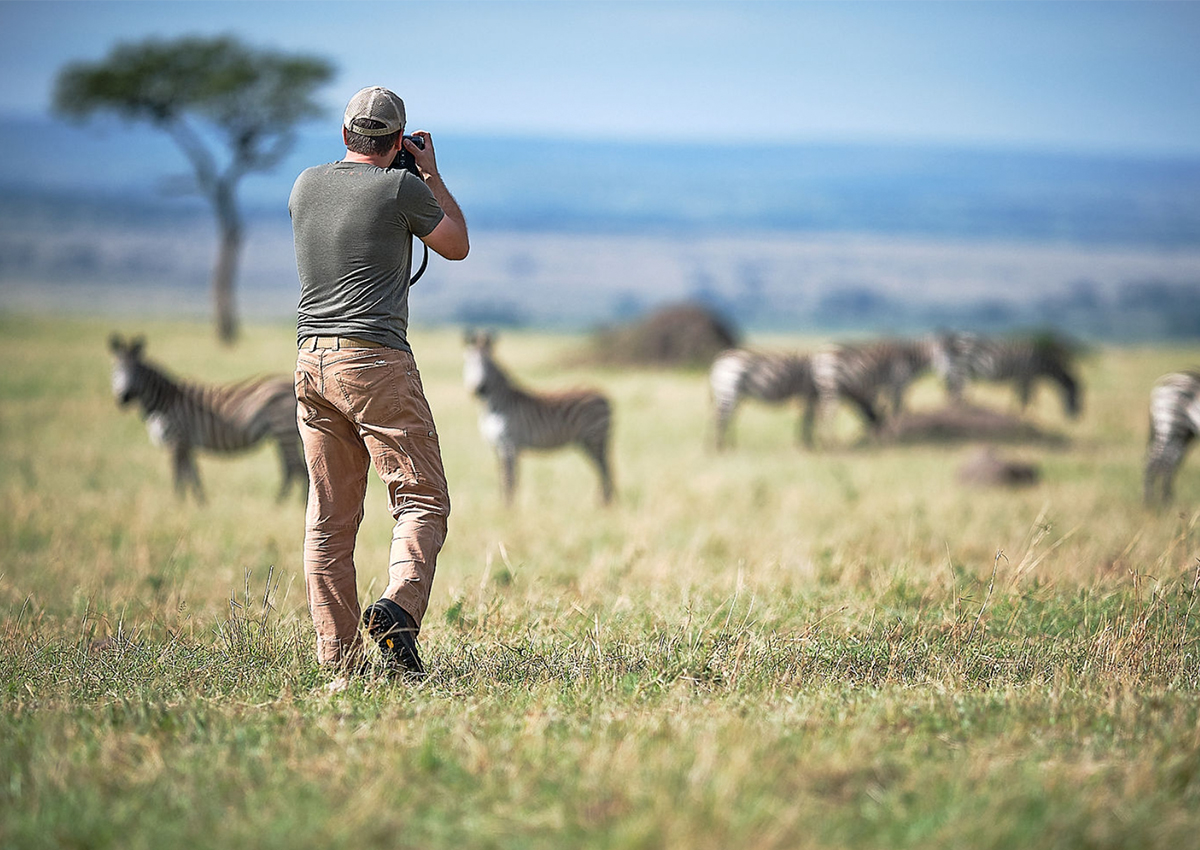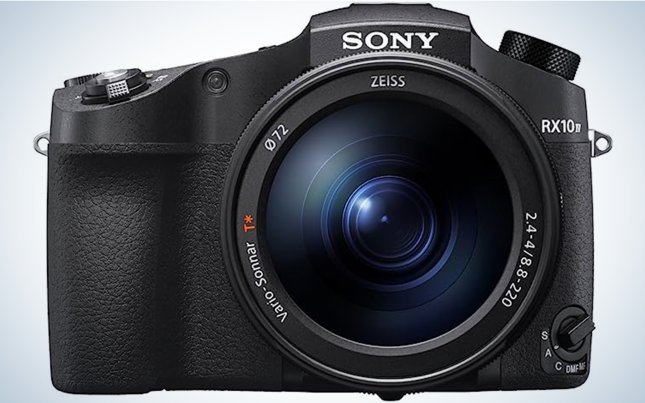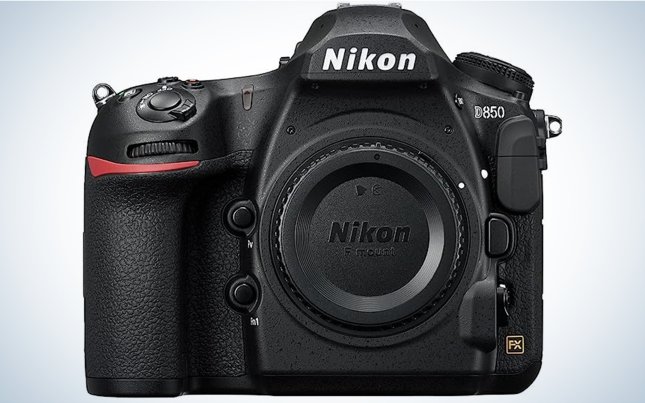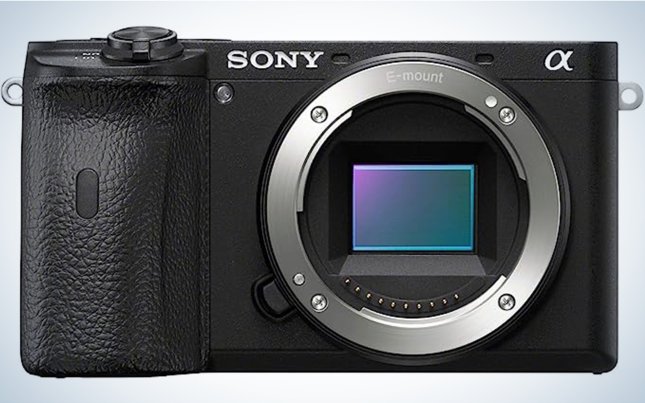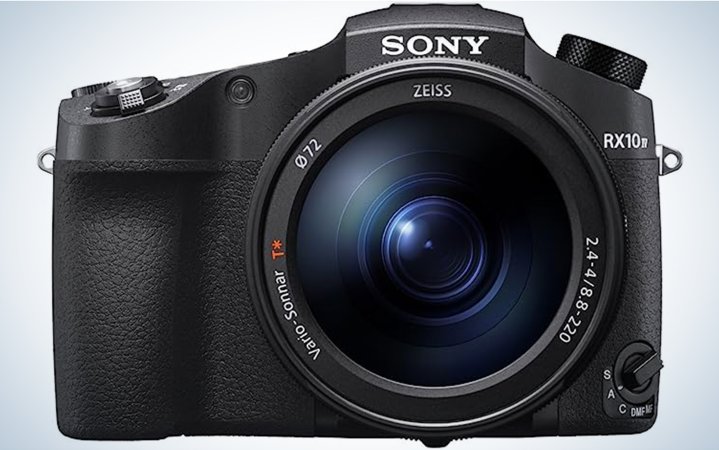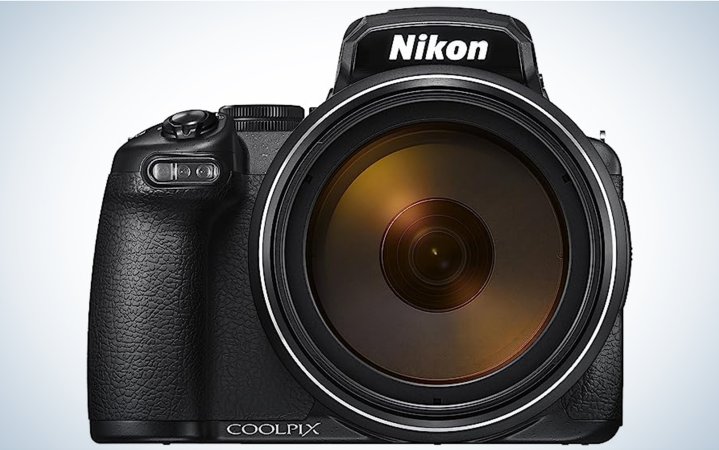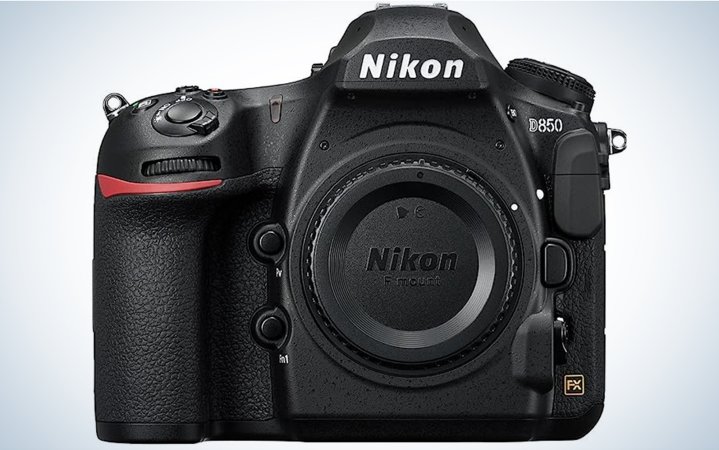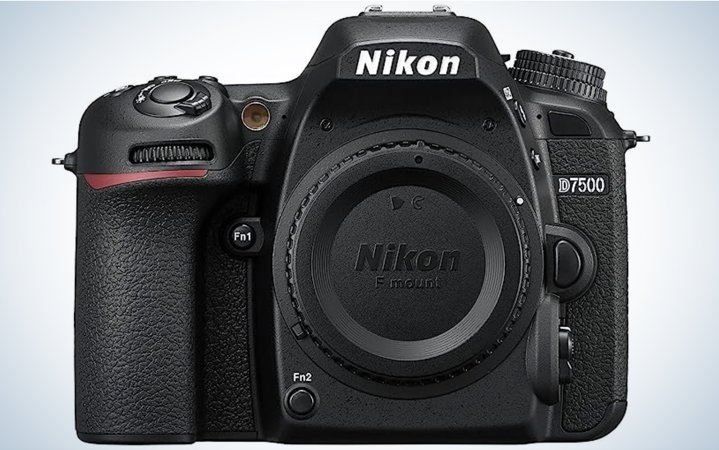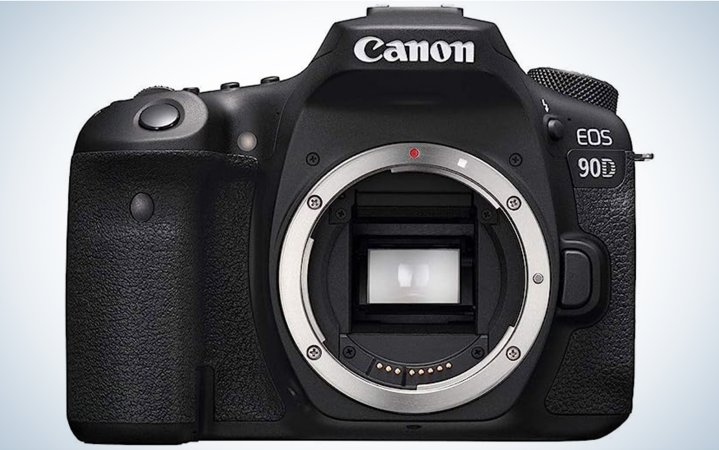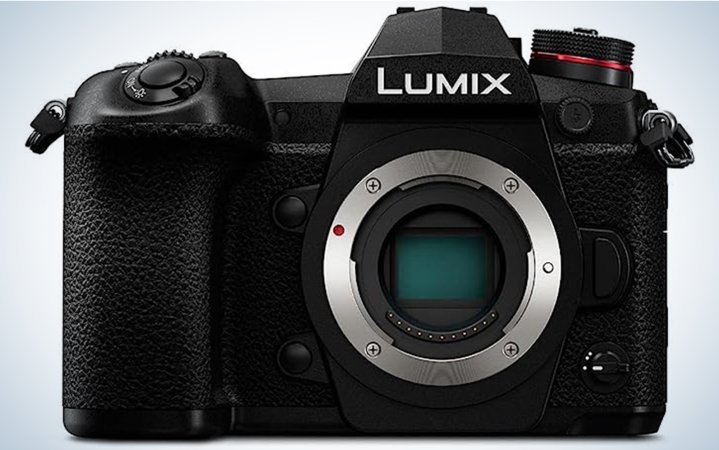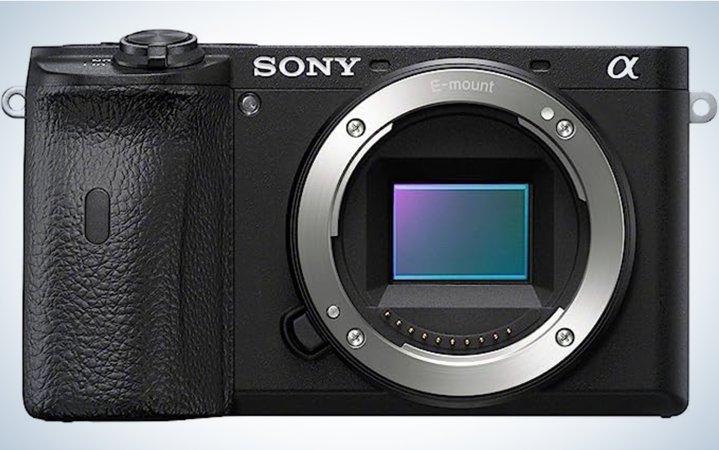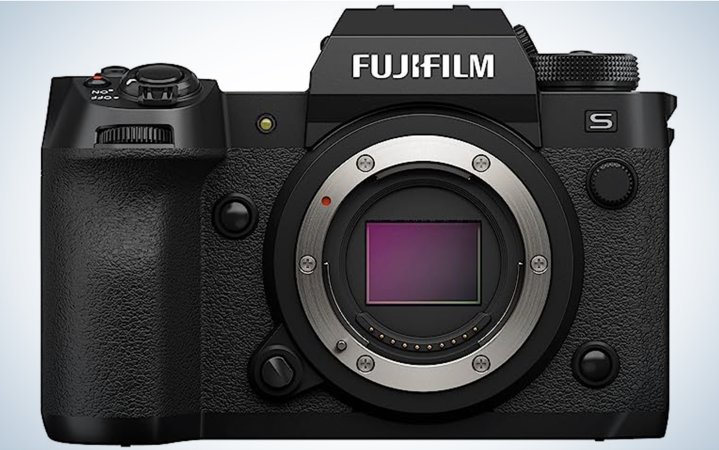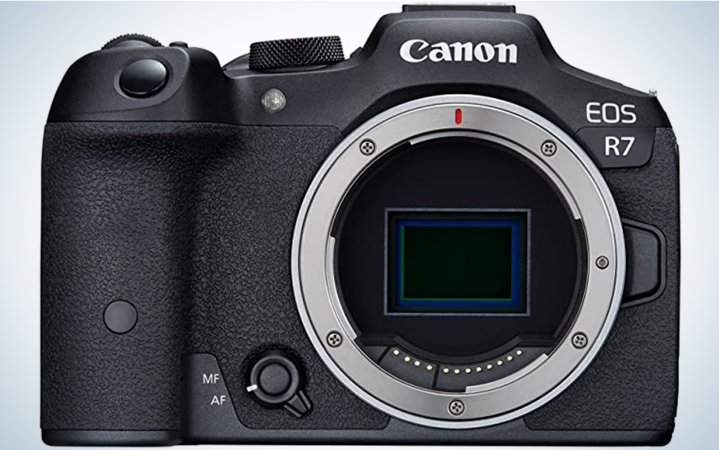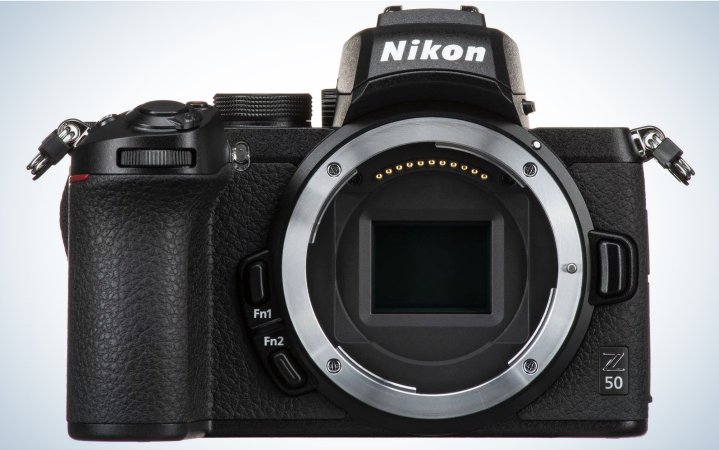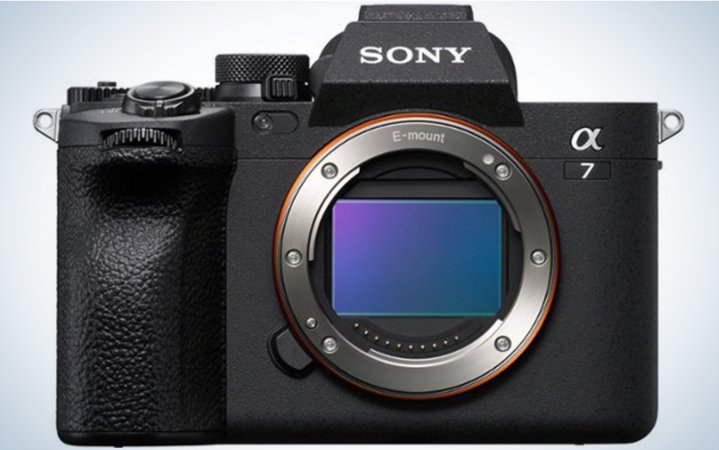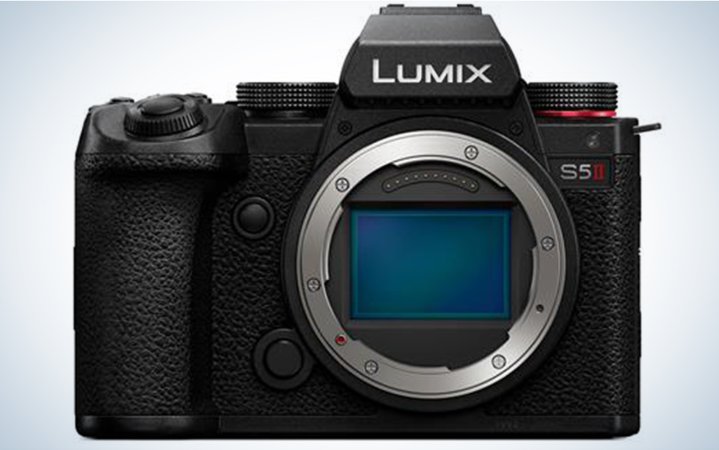We may earn revenue from the products available on this page and participate in affiliate programs. Learn More ›
Twenty years ago people would just ask, “Do you shoot Nikon or Canon?” Not so today. Camera tech has evolved at a blistering pace. There are many high-quality brands vying for your dollars, and there’s a camera system to fit every budget and shooting style. Whether you need a capable point-and-shoot for backyard birding or a pro-level rig for a once in a lifetime photo expedition, your options are many.
But wading the complicated waters of camera specs and marketing hype can be confusing. The key is needing versus wanting. What camera features do you really need to accomplish your photographic goals, and which ones can you do without? To streamline your search, here’s a list of my picks for the best cameras for wildlife photography.
Point-and-Shoot (Bridge)
Digital Single-Lens Reflex (D-SLRs)
Micro Four Thirds Mirrorless
APS-C Mirrorless
Full Frame Mirrorless
How I Chose the Best Cameras for Wildlife Photography

For more than a decade, I’ve been blessed to travel the world, photographing assignments for many of the outdoor industry’s biggest publications and companies (including Outdoor Life). Through those experiences I’ve learned that for outdoorsmen, durability, battery life and weather-sealing are non-negotiables. Camera geeks like me obsess about image quality, dynamic range, low light performance, and other must-haves—while frequent flyers care most about weight and portability. Focus on what you need most, narrow your options and know that, in most cases, whatever camera system you choose will likely pack more punch than you need.
Photography is organized by three distinct camera categories: point-and-shoot (or bridge cameras), D-SLR, and mirrorless. The mirrorless cameras are further categorized by their different sensor sizes: micro four-thirds, APS-C, and full frame. I’ve avoided super high-end, expensive models, and geared this review toward beginner photographers and serious amateurs. The cameras outlined here are but a few of the many options on the market, but they offer a good range of prices and features.
Point-and-Shoot (Bridge) Cameras
Sony RX-10 IV
Sony RX-10 IV
Key Features
- 20.1 megapixels
- 25X optical zoom
- Fast focus tracking with eye-detect
- 4K video with slo-mo capability
- Touchscreen focus and shooting
- Optical image stabilization
- Lightweight
- Price: $1,698
Touted by many as the best bridge camera on the market, the Sony RX-10 IV packs a ton of tech into a tiny form factor. Boasting a zoom range of 24-600mm with a fast f/2.4-4 aperture to excel in low-light shooting, the RX-10 IV is equipped to document anything from postcard-perfect scenics to close-up wildlife portraits. Its fast 24 frames-per-second burst rate, coupled with Sony’s advanced autofocus tracking system, keeps pace with even the fastest-moving subjects—rivaling the capabilities of more expensive, pro-caliber cameras.
Nikon Coolpix P1000
Nikon Coolpix P1000
Key Features
- 16-megapixel low-light CMOS sensor
- Vari-Angle LCD screen for creative shooting angles
- 4K video, timelapse, and “Superlapse” video
- Macro photography as close as one foot to your subject
- Target finding autofocus with subject tracking
- Price: $996.95
The newest model in Nikon’s long standing Coolpix line, the P1000 is the longest superzoom camera available right now (83X optical/125X digital). Its incredible 3,000mm equivalent reach makes it a top choice among wildlife photographers who need extreme zoom range without the bulk of other cameras. Utilizing pro-quality NIKKOR ED glass, optical vibration reduction, and a smooth zoom control ring, the versatile Coolpix P1000 delivers clean, sharp images and video at a sub-$1,000 price tag.
Digital Single-Lens Reflex Cameras (D-SLRs)
Nikon D850
Nikon D850
Key Features
- 45.7 megapixel CMOS sensor
- Seven frames per second continuous shooting (9 fps with optional battery grip)
- 153-point autofocus system
- 4K video and 8K timelapse
- 120 fps slo-mo video
- Tilting touchscreen LCD screen
- Utilizes fast high-capacity CF Express memory cards
- Long-lasting battery life
- Compatible with all Nikon F-Mount lenses
- Price: $2,796.95
Nikon released its famed D850 in 2017. And while six years is an eternity in terms of tech upgrades, the D850 remains a top seller in 2023. A jack-of-all trades, the full frame D850 is celebrated by many as the greatest D-SLR ever made. There’s very little it can’t do. It gets its well-earned reputation by offering a serious mix of performance, heavy-duty construction, high resolution files, reliable focus tracking, weather and dust sealing, and superior image quality at a reasonable price. It’s rare to find less than a 5-star review of the D850, and for the vast majority of amateur and pro photogs, it’s more camera than you’ll ever need.
Nikon D7500
Nikon D7500
Key Features
- 20.9 megapixel APS-C sensor with a 1.5x crop factor
- 4K video
- Timelapse
- Touchscreen/tilting LCD
- Built-in flash
- 51-point autofocus system with face-detect
- Slim ergonomics
- Long battery life (rated to 950 shots)
- Price: $996.95
The popular Nikon D7500 offers many of the same great features as the famed, recently-decommissioned Nikon D500, but in a smaller, lighter, more user-friendly, less expensive package. An APS-C camera offering a 20.9 megapixel DX-sensor, the D7500 features a fast image processing engine, excellent image quality, fast autofocus, and burst shooting at eight frames per second. It tips the scales at a mere 22.6 ounces—making it a great choice for travel, hunts, and fishing trips.
Canon EOS 5D Mark IV
Canon EOS 5D Mark IV
Key Features
- 30.4 megapixels
- 61-point autofocus system
- 4K video
- Touch panel LCD screen
- Seven frames per second burst shooting
- Scene- and face-detect autofocus
- Built-in WiFi and GPS
- Price: $2,499
Offered at the same price point as the Nikon D850, the popular Canon EOS 5D Mark IV remains a top choice among loyal Canon D-SLR shooters. The 5D series has produced some incredible cameras over the years, and the 5D Mark IV is the “latest” offering in this legendary lineage. Even though the 5D Mark IV was released in 2016, retailers across the country continue to keep it in stock. Much like the Nikon D850, the old adage, “If it ain’t broke, don’t fix it,” applies to the 5D Mark IV.
The full frame 5D Mark IV utilizes a 30.4 megapixel sensor, offering a good mix of file size and speed. Sturdy construction, fast and reliable focus tracking, high-resolution image capture, a wide ISO range of 100-32000, and compatibility with any Canon EF-mount lens make it one of the best cameras for wildlife photography.
Canon EOS 90D
Canon EOS 90D
Key Features
- 32.5 megapixel APS-C sensor with a 1.6X crop factor
- 10 frames per second burst shooting (11 fps during live view shooting)
- 45-point autofocus system with face and eye detect
- Compatible with most Canon EF and EF-S lenses
- Electronic shutter with speeds up to 1/8000 second for fast-action shooting
- Price: $1,199
The Canon EOS 90D is billed as a serious enthusiast camera ideal for a wide range of photographic pursuits, including wildlife photography. Canon offers several other D-SLR options—including the full frame EOS 6D Mark II and the less expensive EOS Rebel line (the EOS Rebel T7, EOS Rebel T8i, EOS Rebel SL3). However, the EOS 90D is included here because of its solid mix of high megapixels, fast burst rate, lightweight build, and competitive price. It’s a versatile, reliable, all-rounder that packs a lot of value into a tiny package.
Micro Four Thirds Mirrorless Cameras
Panasonic Lumix G9
Panasonic Lumix G9
Key Features
- 20.3 megapixel sensor
- 80-megapixel high-resolution mode
- 60 frames per second (AFS) high-speed burst rate with electronic shutter
- 20 frames per second (AFC) high-speed burst rate with mechanical shutter
- Dual SD card slots
- 4K video with slo-mo effects
- Price: $897.99
The Panasonic Lumix G9 is a popular choice due its affordable price, durable magnesium alloy frame, fast autofocus and burst rate, superior image stabilization, wide range of lens options, and other great features. Like all Micro Four Thirds cameras, its sensor has a 2X crop factor, so a 300mm lens, for example, has the full frame “equivalent” of a 600mm field of view—making it ideal for wildlife photographers who want super telephoto reach without packing excess weight. Priced under $900, the G9 is a bargain for those who want high performance in a lightweight, rugged package. Another solid camera for wildlife photography is the Panasonic Lumix GH6
APS-C Mirrorless Cameras
Sony Alpha a6600
Sony Alpha a6600
Key Features
- 24.2 megapixels
- 425 autofocus points
- 11 frames per second burst shooting
- Highly accurate
- Real-time eye focus tracking for humans and animals
- 4K video
- Price: $1,398
Sony’s flagship APS-C camera, the a6600 is a small camera that packs a big punch. Tipping the scales at just over one pound, it features an updated 24.2 megapixel sensor and a magnesium alloy body for optimal durability. The a6600 also boasts five-axis image stabilization for creating sharper images in low light conditions, a fast burst rate, and Sony’s industry-leading autofocus and focus tracking. It is a favorite among traveling wildlife photographers who need a lightweight, high-performance camera that won’t break the bank. A similar option is the Sony Alpha a6400.
Fujifilm X-H2S
Fujifilm X-H2S
Key Features
- 26.1 megapixels
- 15 frames per second in mechanical shutter
- Seven stops of Internal Body Image Stabilization (IBIS)
- High-capacity buffer for fast image transfer
- Subject detection to identify and track animals and other subjects
- Utilizes fast CFexpress Type B memory cards
- 4K and 6.2K video
- Optional battery grip
- Price: $2,399
The X-H2S is among Fujifilm’s latest “hybrid” camera offerings, meaning that it’s designed with both still photographers and videographers in mind. This is a popular trend among all camera manufacturers, as they create cameras to suit the needs of multimedia content creators. The X-H2S represents a quantum leap from previous Fujifilm X-Series cameras, and has anchored the Japanese camera manufacturer’s place of dominance in the APS-C mirrorless camera market.

The high-powered, lightweight X-H2S boasts an impressive list of technologies that appeal to serious wildlife photographers. It features a stacked 26.1 megapixel CMOS sensor, an incredible 40 frames per second in electronic shutter, and greatly improved autofocus with subject detection. The X-H2S also offers 14 stops of dynamic range, classic Fujifilm color science and Film Simulations, and a 5.76 million dot resolution electronic viewfinder. The Fujifilm X-S20 is another great option.
Canon EOS R7
Canon EOS R7
Key Features
- 32.5 megapixels
- 1.6X crop factor for extra telephoto reach
- Five-axis sensor-shift stabilization
- Dual SD memory card slots
- Tilting touchscreen LCD
- Canon RF-mount lens compatibility
- Canon EF-mount lens compatibility with mount adapter
- Price: $1,399
Canon wildlife photographers had reason to get excited in June 2022, when the much-anticipated Canon EOS R7 was released. This small but mighty, 32.5-megapixel workhorse remains one of canon’s best APS-C mirrorless cameras for wildlife photography. It offers eight stops of in-body image stabilization, 30 frames per second burst shooting in electronic shutter (15 fps in mechanical shutter), and fast, precise, 651-zone autofocus. Paired with any of Canon’s telephoto or super telephoto lenses, and you have a pro-caliber camera for wildlife photography that’s ready for serious action. The Canon EOS R100 is a similar option.
Nikon Z50
Nikon Z50
Key Features
- 20.9 megapixels
- Silent photography mode
- Durable
- Lightweight design
- 11 frames per second burst shooting
- Good low-light performance
- Price: $756.95
To the frustration of many Nikon shooters, there hasn’t been a new Nikon wildlife-appropriate APS-C mirrorless release in quite a while. That said, the affordable, compact, and capable
20.9-megapixel Nikon Z50—released in October 2019—remains a solid option for wildlife photography. Offering tight weather sealing for protection from inclement weather, a high resolution electronic viewfinder, adequate burst shooting for wildlife work, and capable focus tracking, the Z50 is compatible with any Nikon Z mount lens, or with adapted Nikon F Mount lenses—offering wildlife photographers a number of great options. Another choice is the Nikon Z30.
Sony Alpha a7 IV
Sony Alpha a7 IV
Key Features
- 33 megapixels
- 10 frames per second burst shooting
- 15 stops of dynamic range
- 4K video
- Precise eye autofocus tracking (people, birds, and animals in photo and video modes)
- Powerful image processing engine
- Five-axis in-body image stabilization
- Dual card slots (SD and CFexpress type A)
- Price: $2,499
Sony has converted many photographers to their ranks, and with good reason. Its industry-leading autofocus tracking was the envy of the mirrorless world for years. While other companies are catching up, Sony mirrorless cameras remain among the best money can buy. The 33-megapixel Alpha a7 IV continues Sony’s tradition of superior focus tracking, robust menu systems with customizable controls, superior image quality, pro-level video capabilities, and low noise levels in low-light shooting. And its five-axis image stabilization helps wildlife photographers get the shot in low light, when shutter speeds are often slower than desired and camera shake can ruin your images.
Nikon Z6 II
Nikon Z6 II
Key Features
- 24.5 megapixels
- 14 frames per second burst rate
- 3.5X more buffer capacity than the original Z6
- Impressive autofocus tracking
- Dual card slots (SD and CFexpress Type B)
- Optional battery grip
- Compatible with all Nikon Z Mount sense and adapted Nikon F Mount lenses
- 4K video with timelapse
- Price: $1,996.95
Nikon’s initial mirrorless offerings—the Z6 and Z7—were met with mixed reviews. Nikon was slow to enter the mirrorless market, and its loyal shooters expected big results. While the Z6 and Z7 were competent cameras, they fell short in several ways. Thankfully, their second-generation replacements, the Z6 II and Z7 II, brought significant improvements and much-needed excitement back into Nikon’s camp—convincing many longtime D-SLR photographers to finally make the switch to mirrorless. And if you buy the FTZ (or FTZ II) mount adapter, you can use many of Nikon’s F-Mount lenses with full autofocus.
The Nikon Z6 II offers a fantastic mix of affordability, high ISO (low light) performance, speed, versatility, solid video capabilities, very accurate autofocus, and rugged build quality. An additional option is the Nikon Z5.
Canon EOS R8
Canon EOS R8
Key Features
- 24.2 megapixels
- 1,053 autofocus zones
- 4K video
- Superior subject detection autofocus (head, face, eye, and animal)
- Lightweight construction
- Price: $1,499
The EOS R8 is a recent addition to Canon’s mirrorless lineup. Released in April 2023, the R8 offers mirrorless wildlife photographers an exciting, feature-rich camera. Weighing less than one pound, the compact R8 is Canon’s lightest full frame mirrorless option—making it ideal for wildlife photographers who cover lots of ground. It’s a solid hybrid camera targeted to both still photographers and video content creators. Delivering rich image quality, fast, accurate colors, precise autofocus, and a long list of creative video features, the EOS R8 is all the camera that many Canon mirrorless shooters would need to document their wildlife photo adventures. The Canon EOS R6 is a similar choice.
Panasonic Lumix S5 II
Panasonic Lumix S5 II
Key Features
- 24.20 megapixels
- 96-megapixel high resolution mode
- Rugged construction
- Built-in cooling fan to aid in video recording
- Dual SD card slots
- L-Mount lens compatibility
- Price: $1,997.99
Panasonic has made big moves in the mirrorless world of late, and the new S5 II brings considerable value and performance to photographers who choose the L-Mount Alliance (Panasonic, Sigma, and Leica). The S5 II replaces the S5, which fell short due to its antiquated autofocus system. Many consider the S5 II to be Panasonic’s first real contender for documenting fast-moving subjects.
This 24.20-megapixel powerhouse features Panasonic’s trademark rugged, weather-sealed construction, all-new phase hybrid autofocus for greatly improved focus tracking, a number of versatile video options, powerful image stabilization, and compatibility with a number of sharp, high-performance Panasonic, Sigma, and Leica lenses—all at a reasonable price.
Things to Consider Before Buying the Best Camera for Wildlife Photography

Point-and-Shoot
“Point-and-shoot” cameras get their name from their construction and ease of use. With built-in lenses that often have focal length ranges from wide angle to extreme telephoto, they offer an all-in-one approach that appeals to wildlife photographers who don’t have the budget or the need for a cumbersome camera kit. While point-and-shoots sometimes get a bad reputation as being inferior to their more robust counterparts, that’s simply not true. Today’s options offer a mix of features in sleek, lightweight, high-tech packages.
Digital Single-Lens Reflex (D-SLR)
D-SLRs have been a driving force in cameras for wildlife photography for decades. Early models slowly but surely pushed film cameras aside—convincing even the most staunch film shooters that digital photography was here to stay. Early D-SLRs offered a handful of megapixels and a short list of mediocre features that were heralded as revolutionary at the time. Fast forward a couple decades, and D-SLRs are still on the scene, loaded with more tech than the first Apollo space shuttles.
Even though D-SLRs are losing ground to mirrorless cameras, they still command respect. They pack tons of tech into tough, pro-quality builds—offering photographers of all levels and budgets serious capabilities in robust, durable, high-performance bodies.
Unlike point-and-shoot cameras, D-SLRs don’t have built-in lenses. When you buy a D-SLR, you need to buy attachable lenses built to fit the specific lens mount of your camera. You’re buying into a camera system, which comes with added expense—but also added versatility.
D-SLRs come in two sensor sizes: full frame and APS-C. Entire articles—and often heated debates—are devoted to the differences between the two, but for our purposes, the main differences are negligible. Here’s a quick, over-simplified synopsis: APS-C cameras have smaller sensors than full-frame cameras, and the result is a “cropping” of sorts. An APS-C camera with a crop factor of 1.5X “multiplies” the lens’s focal length by 1.5X. A 300mm lens on an APS-C camera with a 1.5X crop factor will have a full frame “equivalent” field of view of 450mm. Likewise, a 500mm lens on an 1.5X APS-C camera plays like a 750mm.
For this reason, many wildlife photographers prefer APS-C cameras for the extra reach they provide. A few short years ago, the case could be made that serious wildlife photographers should shoot full-frame cameras. But now, their smaller-sensored APS-C cousins have made great strides, and in most cases, compete admirably alongside D-SLRs. Nikon and Canon remain the only two major players in the “old school” D-SLR space.
Mirrorless
As their name implies, mirrorless cameras capture images without using a mirror inside the camera body. The result is a smaller, lighter camera. Another key difference is the viewfinder. Unlike optical viewfinders used in D-SLRs, mirrorless cameras use electronic viewfinders (EVFs) to display images digitally. Early mirrorless cameras were plagued by poor EVF quality, weak battery life, limited lens options and other issues that caused many hesitant photographers to hang onto their D-SLRs.
Fast forward a few years, and it’s evident that mirrorless technology is the future of digital photography. Much like D-SLRs dominated the market and eventually pushed film cameras aside, mirrorless cameras are now doing the same to D-SLRs.
Like D-SLRs, mirrorless cameras are available with different sensor sizes: micro four-thirds, APS-C, and full frame. Each has its particular pros and cons, as well as loyal fan bases. And each has its rightful place in wildlife photography.
Competition to develop new mirrorless tech has definitely benefited the consumer. There are now seemingly endless options. Every major camera manufacturer has embraced the mirrorless movement. Sony emerged as an early leader, and Panasonic has ruled the Micro Four Thirds realm. Nikon, Canon, and others have also made great strides. And in the APS-C space, Fujifilm is a major player. I picked the single “best” cameras for wildlife photography from each mirrorless manufacturer, and provided links to similar cameras for comparison.
Read Next: The Best GoPro for Filming Hunts and Fishing Trips
Final Thoughts on the Best Cameras for Wildlife Photography
None of these cameras will make you a better photographer; that comes with dedication, practice, and patience. But the features and technologies available today will increase your “keeper” rate the next time you take to the field in search of wildlife photography subjects. Find the best camera for wildlife photography with the right price and feature set below:
Point-and-Shoot
Digital Single-Lens Reflex (D-SLRs)
Micro Four Thirds Mirrorless
APS-C Mirrorless
Full Frame Mirrorless
